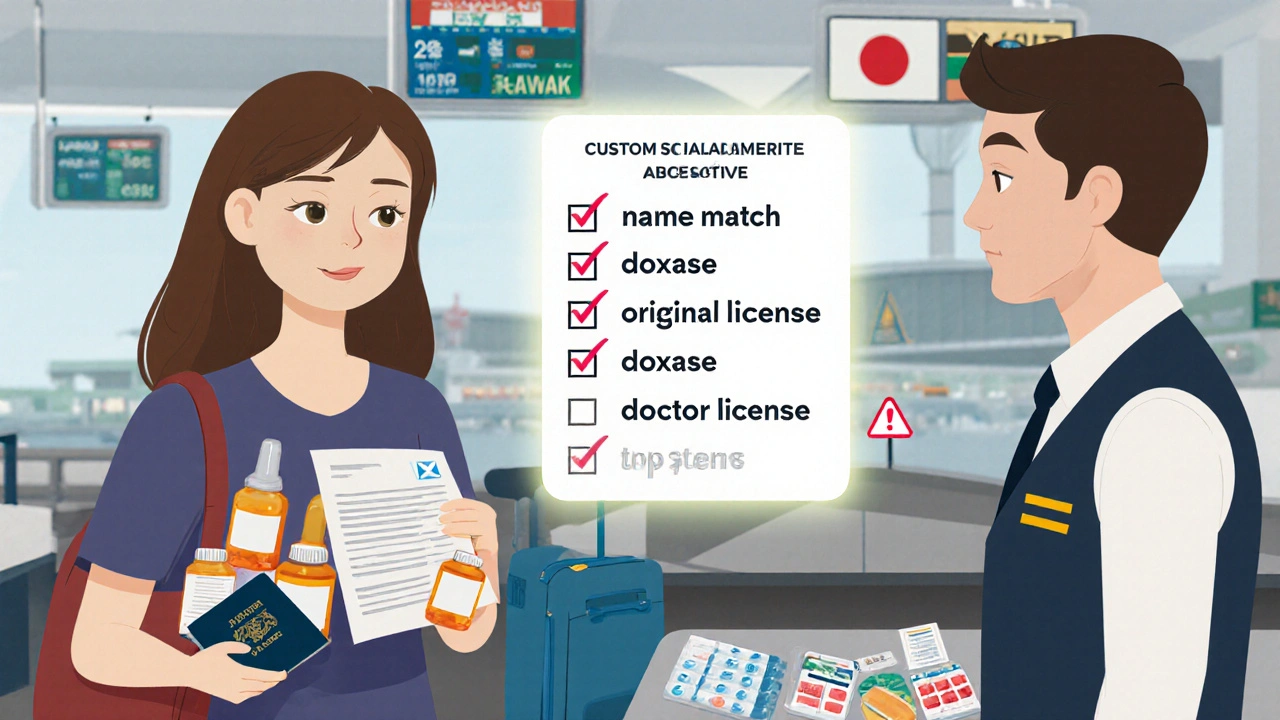Airport Medication Rules: What You Can and Can't Bring on a Flight
When you're flying with airport medication rules, the set of guidelines that govern how travelers can carry prescription and over-the-counter drugs through airport security and onto aircraft. Also known as TSA medication guidelines, it's not just about packing pills—you need to know how to prove they're yours, where to put them, and what happens if you're carrying something restricted. Millions of people fly with medications every year, but too many get caught off guard because they assume rules are the same everywhere. The truth? It's not about the brand or the country you're from—it's about what's in the bottle and how you show it.
One of the biggest mistakes travelers make is tossing all their meds into a random bag. TSA medication guidelines, the official rules enforced by the U.S. Transportation Security Administration for carrying drugs in carry-on and checked luggage. Also known as flying with medication, it requires your prescriptions to be clearly labeled with your name and the pharmacy's info. If you're carrying pills in a pill organizer, you're risking a delay—or worse, confiscation. Same goes for injectables like insulin or epinephrine. You don’t need a doctor’s note for most over-the-counter drugs, but if you're carrying something like Adderall, Xanax, or oxycodone, you better have the original bottle with your name on it. No exceptions.
It’s not just the U.S. either. airline drug policies, the specific rules set by individual carriers regarding the transport of pharmaceuticals, which can vary by country and route. Also known as travel with prescriptions, they often mirror TSA rules but can be stricter overseas. Countries like Japan and Singapore ban certain painkillers and cold medicines that are legal in the U.S. and Europe. You can’t just assume your meds are fine because they’re legal at home. Always check the destination country’s health authority website before you pack. And don’t forget: liquid medications over 3.4 oz are allowed in carry-ons if they’re medically necessary—but you must declare them at security. No hidden bottles. No sneaking them in.
What about vitamins? Supplements? CBD oil? The rules get fuzzy here. Most vitamins and herbal supplements are fine, even in large quantities, as long as they’re not illegal in your destination. CBD oil? That’s a minefield. Even if it’s legal in your state, federal rules and international borders don’t recognize it. Some airlines will let you bring it if it’s hemp-derived and under 0.3% THC—but many won’t. Better to leave it at home unless you’re sure.
And what if you need to carry syringes or needles? You can. But you must have a prescription or doctor’s letter explaining why. Keep them in their original packaging. Don’t wrap them in foil or hide them. Security officers aren’t mind readers—they need to see proof it’s medical. Same with inhalers, EpiPens, and glucose monitors. These are exempt from the 3-1-1 liquids rule, but you still have to tell the agent before screening.
There’s no magic trick to avoid hassle. The key is preparation. Label everything. Keep prescriptions in original bottles. Bring a printed list of your meds and dosages. If you’re on a long trip, pack extra in checked luggage as backup. And if you’re unsure? Call your airline ahead of time. Most have medical assistance lines just for this.
Below, you’ll find real guides on how to handle specific medications while traveling—from diabetes drugs to antidepressants, from steroids to painkillers. These aren’t theory pieces. They’re based on what people actually ran into at security checkpoints, customs desks, and foreign pharmacies. Whether you’re flying for work, vacation, or medical care, you’ll find clear, no-fluff advice to keep your meds safe and your trip smooth.

Travel Letters for Controlled Medications: Airport and Customs Tips
Learn how to travel safely with controlled medications. Get the exact documents you need, avoid customs seizures, and know which countries ban your prescriptions-so you don’t get detained at the airport.
October 28 2025